With their compact design and iconic retro appearance, Lilliput caravans hold a special place in the hearts of Kiwi caravan enthusiasts. Claire Smith met with a couple who love them so much, they collected the whole set.
Tina Hackett and Richard Mason like collecting things. They’ve got a room full of retro homeware collected from secondhand stores over many years, a cabinet full of model cars, and even an unusual assortment of vacuum cleaners. But their most prized collection is a set of four Lilliput caravans.
Lilliput caravans were manufactured in New Zealand during the 1960s and 70s in a range of four sizes: 10ft (3.04m), 10ft 6 inches (3.20m), 12ft (3.65m), and 12ft 6 inches (3.80m). What makes the Masons’ collection so special is that they have one in each size. Each has been lovingly and authentically restored and refurbished (with one still a work in progress) to match the era of each caravan.
A builder by trade, Richard’s love of buying and restoring old vehicles started with classic cars, including the green Zephyr that partners up with their smallest caravan, ‘Mason’. “I enjoy restoring cars, but I discovered it was far cheaper, and more fun, to restore caravans,” he says. “What I really love about caravans is that you have the scope to personalise them and try something unique with each.”
Caravanning has enjoyed a huge resurgence in popularity over recent years, with vans of all shapes and sizes being snapped up for considerable sums, especially by restoration enthusiasts. But Richard and Tina only have eyes for Lilliputs. “The biggest drawcard for us is the fact they’re Kiwi made. We’re very dedicated to all things Kiwiana, especially when it’s something that tells a story. And the Lilliput story had us hooked – these little caravans really are the ultimate New Zealand icon, and each one has its own interesting history,” says Richard.
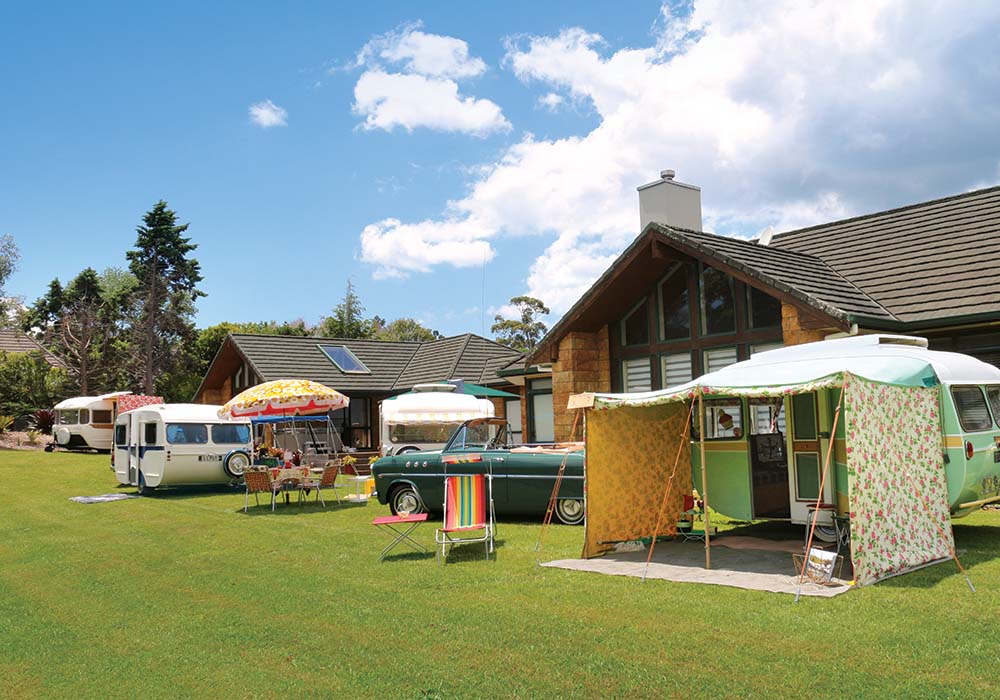
A Kiwi Icon
Lilliput caravans were originally designed and built by Kiwi coachbuilder Bruce Webster in his Onehunga garage. Having built a few standard-sized caravans to order after the Second World War, he decided in 1962 to build one for himself.
Built primarily from strong plywood, the caravan Bruce made for himself was much smaller – just 9ft (2.75m) long and 6ft (1.82m) wide – than those he built to order. He named the caravan ‘Lilliput’, as suggested by his young son Paul, who at the time was reading Jonathon Swift’s classic tale Gulliver’s Travels.
Bruce continued building his Lilliput caravans full-time, modifying and improving his design with each build. His later models progressed from plywood through to aluminium over ply sides with moulded fibreglass roofing and eventually moulded fibreglass constructions.
Over the following two decades, Bruce, and his successor for the last three years John Rolfe, built around 300 caravans, until the unannounced introduction of a crippling sales tax in 1979 brought the New Zealand caravanning industry to its knees overnight – sadly including the Lilliput business.
Although only a few of the early plywood designs are still in existence, the last two models – the 12ft 6-inch (3.8m) Special and the 10ft 6-inch (3.2m) Gazelle – endured better. While Bruce designed and built the 12’6” Special as a premium caravan, it didn’t prove to be as commercially viable as expected, and only 29 were ever built. The Gazelle, however, was an immediate success; approximately 250 were built.
With their characteristic retro appearance, Lilliput caravans remain very popular, especially given their compact and easily towable size and meticulous design.
Unlike most classic vehicle collections, the Masons’ caravans are all regularly put to good use. “We have friends who have the big modern new caravans with all the bells and whistles, but because they’re so big and heavy, they really only travel for week-long holidays,” says Tina. “With our little caravans, we think nothing about coming home from work on a Friday night and spontaneously hooking up one of the caravans for a weekend away. They’re so small and easy to hitch up and set up somewhere.
“Now that our children are grown up, the kids will take a caravan each, we’ll take one, and we’ll all camp together as a family. It really doesn’t get any better than that!”
AR n AR’ – 1976, 10ft 6 inches
The Masons’ love of Lilliputs started with their very first caravan, AR n AR (short for Rest and Relaxation), which they bought in 2009. “We were initially just looking for a caravan for holidaying around New Zealand,” says Richard. “Because we both have a fondness for the ‘60s era, we wanted something retro and unique. We’d seen a Lilliput at a car show and decided that was exactly what we wanted, so I started researching and found AR n AR for sale down in Christchurch.
“It’s in excellent condition and still has its original ‘70s fit out, complete with orange upholstery and timber veneer cabinets,” says Richard. “We’ve repainted the exterior, but apart from that the only thing I’ve modified is how the fridge is positioned. It was originally jutting out quite a bit from the cabinet, so I took the motor off the back and sealed it up; instead we now have a compressor sitting under the bench seat that sits alongside, so the fridge now sits flush with the cabinetry.”

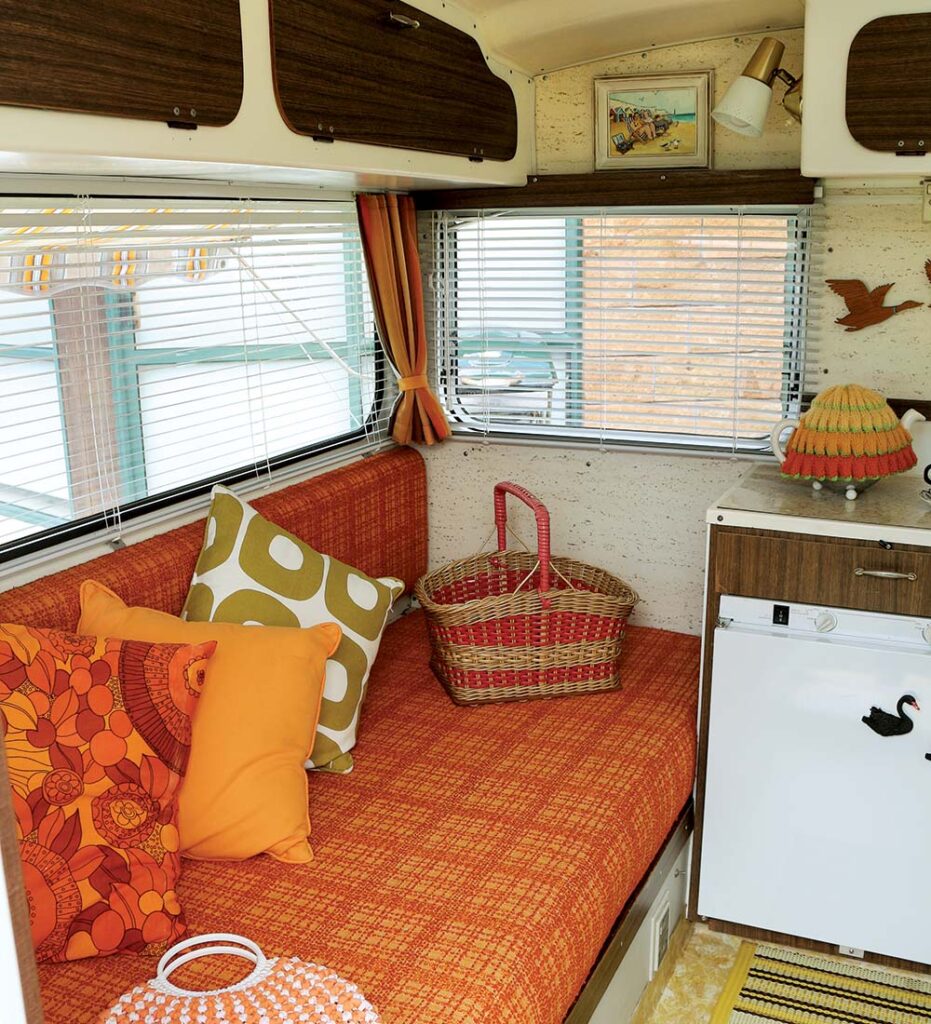
While travelling back to Auckland with their new caravan, Richard and Tina stopped at their first New Zealand Lilliput Caravan Club rally and have been members ever since. The club was formed in 1988 and has members all over New Zealand and a few in Australia. The club holds rallies in February every year, which is always a great opportunity for members to catch up and share their latest travels.
“Each year the rally has a theme, so we all get dressed up and have loads of fun,” says Tina. “Most of the members have spent time doing up their caravans and learning handy tricks of the trade, so there’s this lovely sharing of skills, as well as some fascinating stories.”

MASON – 1966, 10ft
Mason is the smallest of the collection at 10ft (three metres). Richard fully stripped the caravan down and repainted it, and the couple have added to and enhanced the interior. “The original owner was a cabinetmaker, and as a result I think it has the best layout and cabinet work of any Lilliput of its era,” says Richard.
Every inch is perfectly presented, with ‘60s fixtures and fittings and a selection of fascinating items from the era. “We’ve spent a fair bit of time over the years rummaging through antique and secondhand stores around the country finding unique treasures for each caravan,” says Tina. “One of our best finds was when we came across Mason’s original rose-patterned roller blind on TradeMe. So now that is back in place and it fits perfectly.”

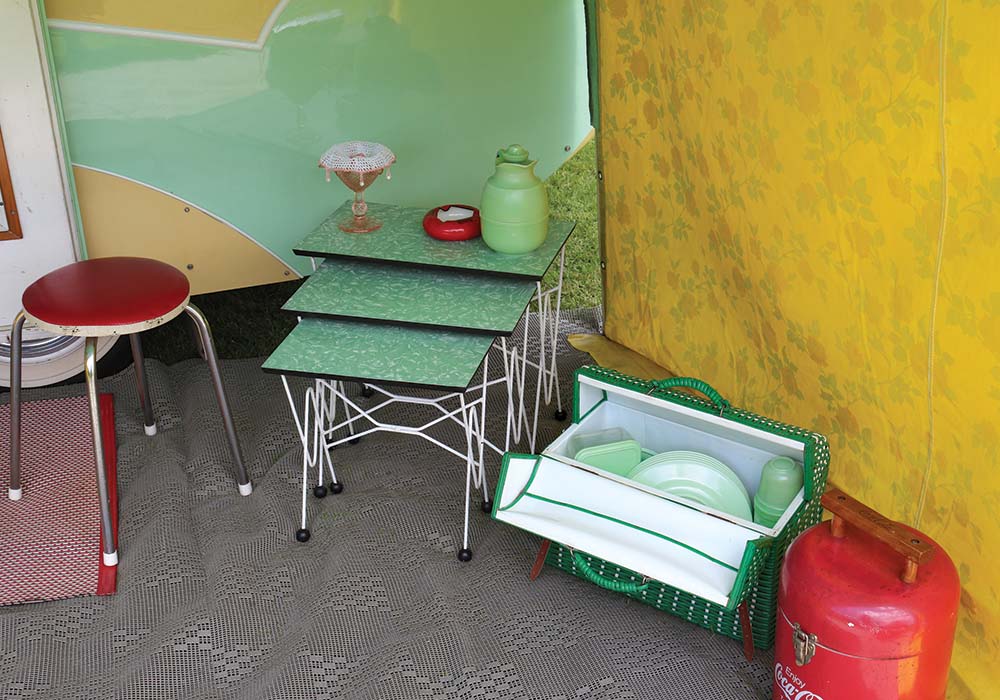
If you’ve been to the Covi SuperShow in Auckland over the past few years, you may have seen Mason on display, decked out splendidly in his ‘60s finery. In 2017, Mason was featured on a breakfast TV show, and the caravan was spotted by his previous owners. They stopped by the show to take a look, and were able to give Richard a bit of history about the caravan, along with a handy tip about its interior layout. “I could never work out why the upstand on the front seat sat so far up above the window. I thought it was just a workmanship fault. But after talking with the previous owners, we discovered that it pulls out and becomes a base to make a bunk bed, so that was a handy piece of information!”


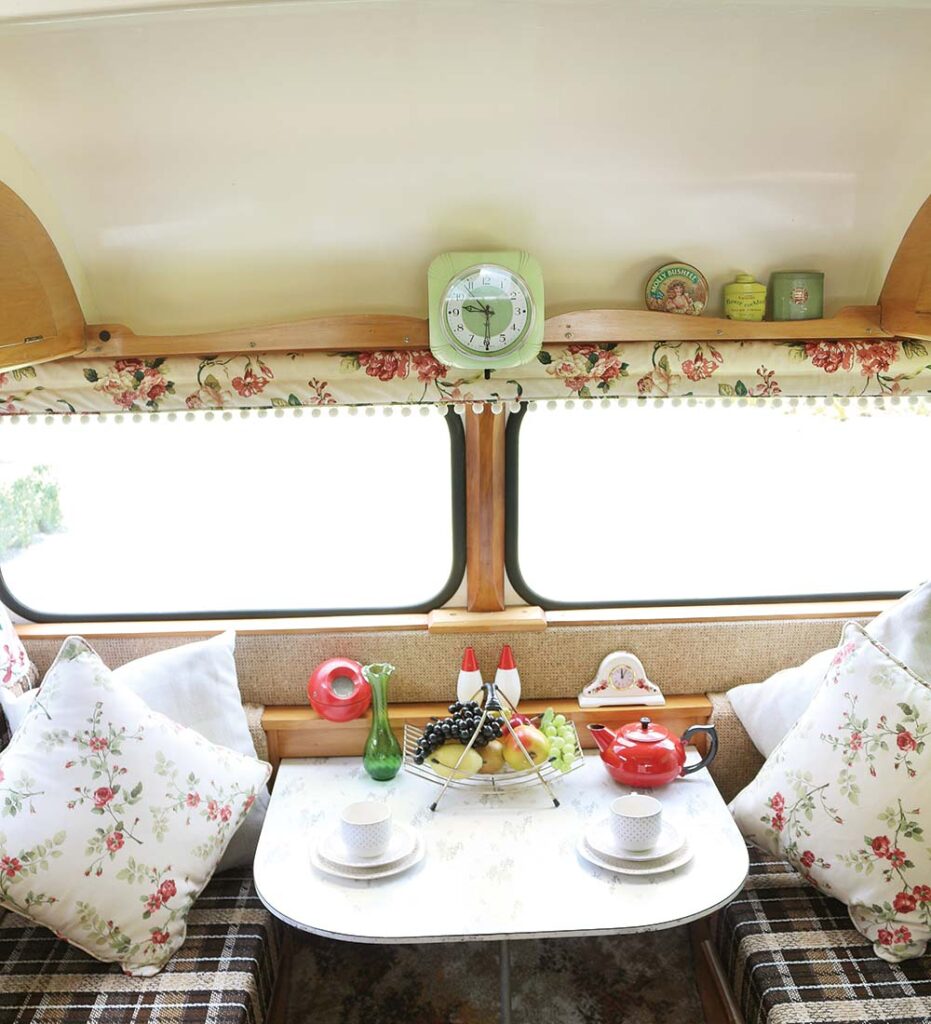
SAPPHIRE – 1964, 12ft
The oldest and most luxurious in Richard and Tina’s collection, Sapphire certainly suits her name. “She originally had an aqua-green exterior accent, but we repainted the side flash and fender skirts to a rich blue to match the Holden ute she’s paired with.” And as a finishing touch, Richard added tinted blue windows.
“Sapphire is a beautiful van and her cabinetry is in great condition,” says Richard. And that beauty is brought to life with the enchanting selection of 60s ornaments and decor including one of Tina’s quirky vacuum cleaners – a battery-operated hand-sized cow that is brought out to clean up crumbs from the dining table. “He cost me about $3 from the Salvation Army store. I have to guard him carefully because my girlfriends are always trying to steal him!” says Tina.
Sapphire is also adorned with backlit mirrored clocks that feature 60s movie stars, a selection of antique salt and pepper shakers, and of course, the all-important wall-mounted spirit dispenser (usually rum or whiskey!).
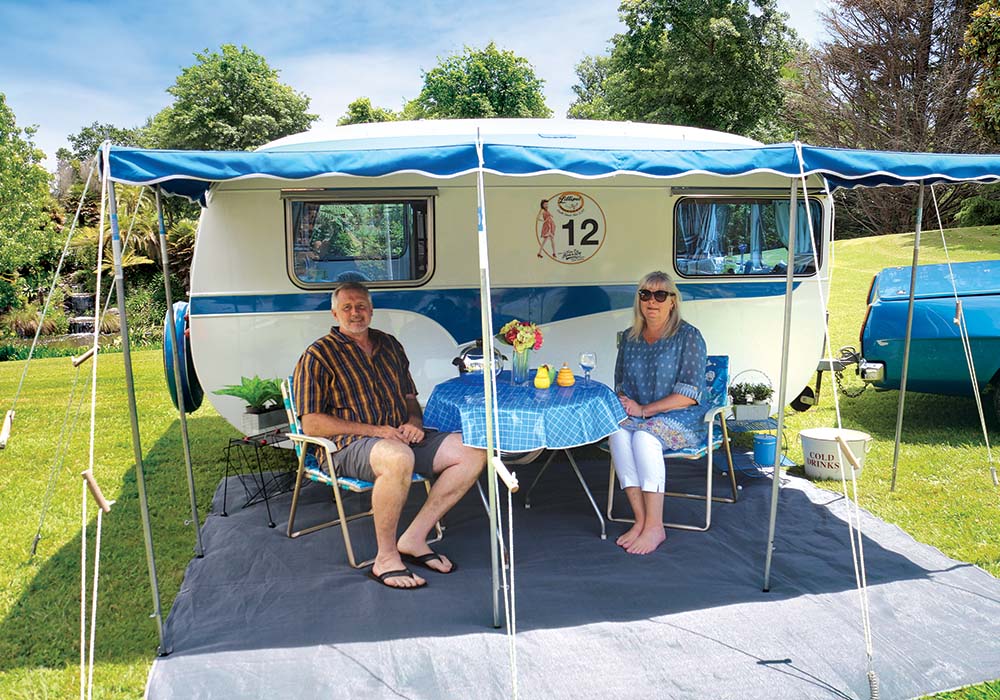

Because Sapphire is 12ft and very roomy – with a rear double bed and a front dinette – and fully self-contained, she’s usually Richard and Tina’s ‘go to’ caravan for longer holidays away and always gets plenty of attention at the campground.
One of the clever modifications that Richard and Tina have added to Sapphire is the slide-out fridge, which sits under the seat next to the entry door. “The original fridge was a real pain to get to,” says Tina. “You had to lift up the seat to access it, and the table was in the way, so we decided to find a better option.”
Richard found an induction fridge that fitted in the existing cabinet perfectly. “So now the fridge works like a drawer – it pulls open easily without having to go in from the top. You can be standing outside and just lean in, slide open the fridge, grab a beer and you’re good to go!”
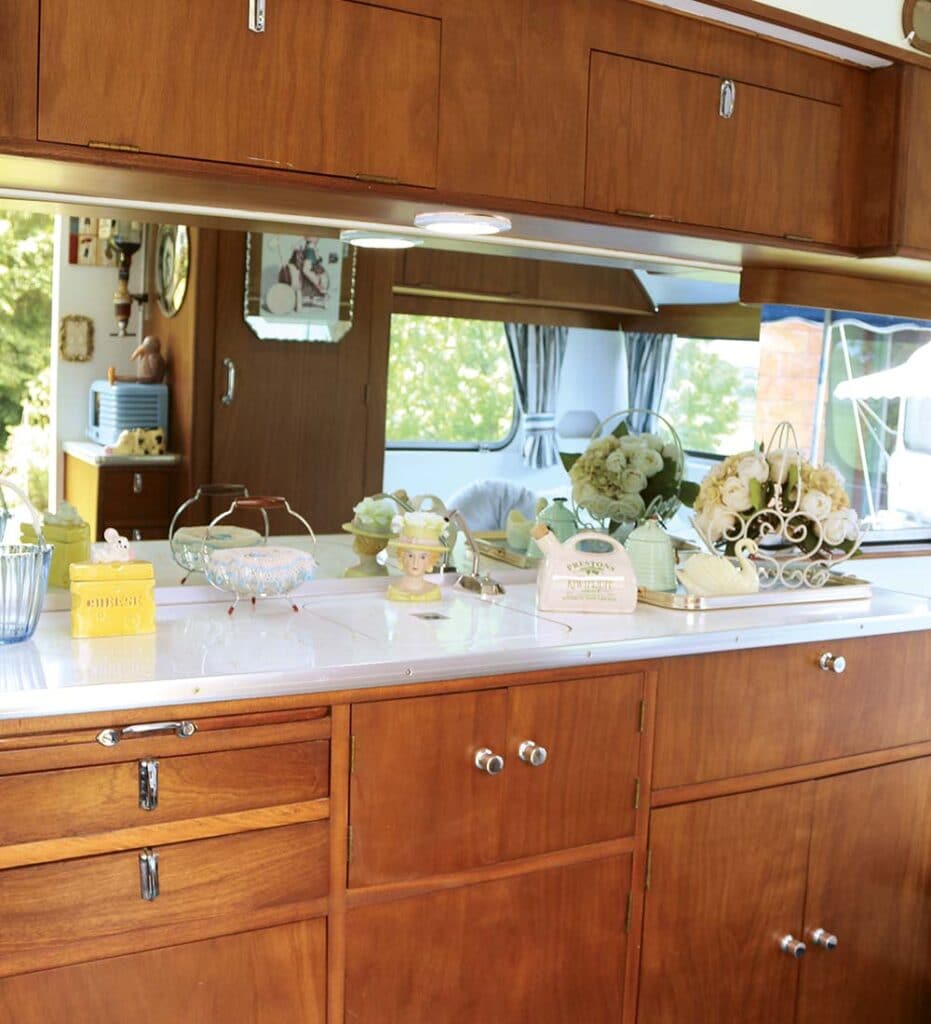
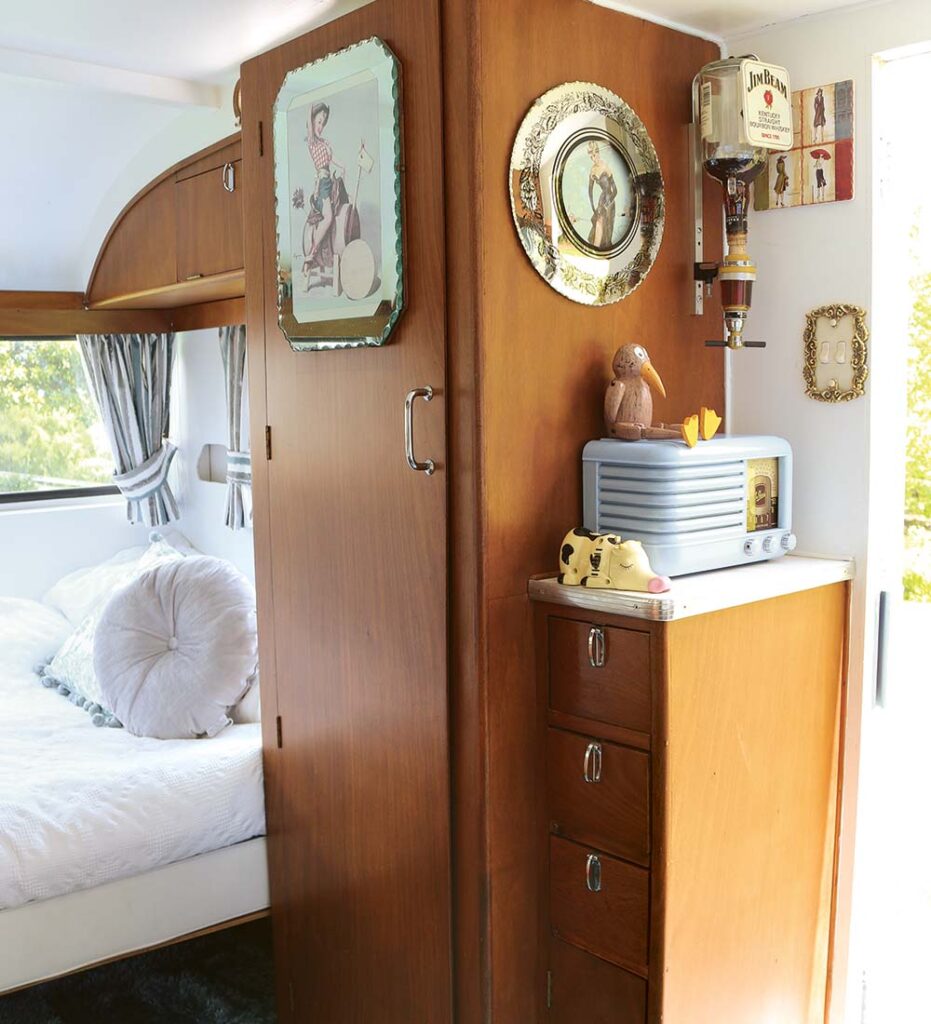

CLIFFORD – 1971, 12ft 6 inches
The most recent addition to the Mason’s collection is a 1971, 12ft 6-inch (3.81m) caravan called Clifford – named after his original owner, Cliff. With only 29 of this model ever made and only a handful now remaining, Clifford is a rare specimen indeed – even more so because the exterior and body is in excellent condition. “We feel very lucky to have Clifford in our collection,” says Tina. “As you’d expect, there were quite a few people interested in him.”
Clifford’s original 94-year-old owner bought him brand new in 1971 and looked after him well, keeping the caravan under cover throughout its life. “Cliff’s wife had recently passed away and he felt it was the right time to pass the caravan on,” says Tina. “As Cliff was elderly and on his own, we checked with his daughter on whether anyone in the family wanted to hold on to the caravan. But they were happy it was going to a good home where it would be restored and kept.”

“Cliff bought the caravan as a shell and then fitted it out himself,” says Richard, who is in the process of refitting the interior. “Because it’s been so well looked after, the exterior will only need a bit of a polish to make it shine, but the interior has lots of potential,” says Richard.
Cliff used oak wood in the interior, but it isn’t in great condition, so Richard has been experimenting with different types of wood to use on the cabinetry. “I’m planning to fit it out with rimu panelling because it’s a Kiwi timber.”
The Masons are looking forward to finishing Clifford’s restoration over the next few months and being able to take him on holidays and to Lilliput rallies to show him off a bit.
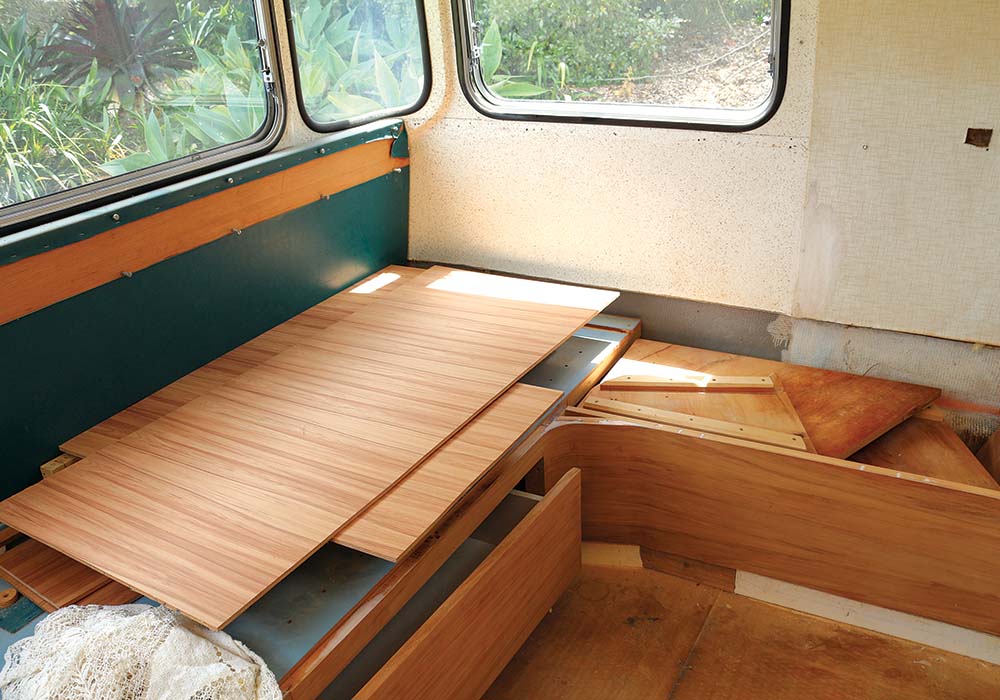
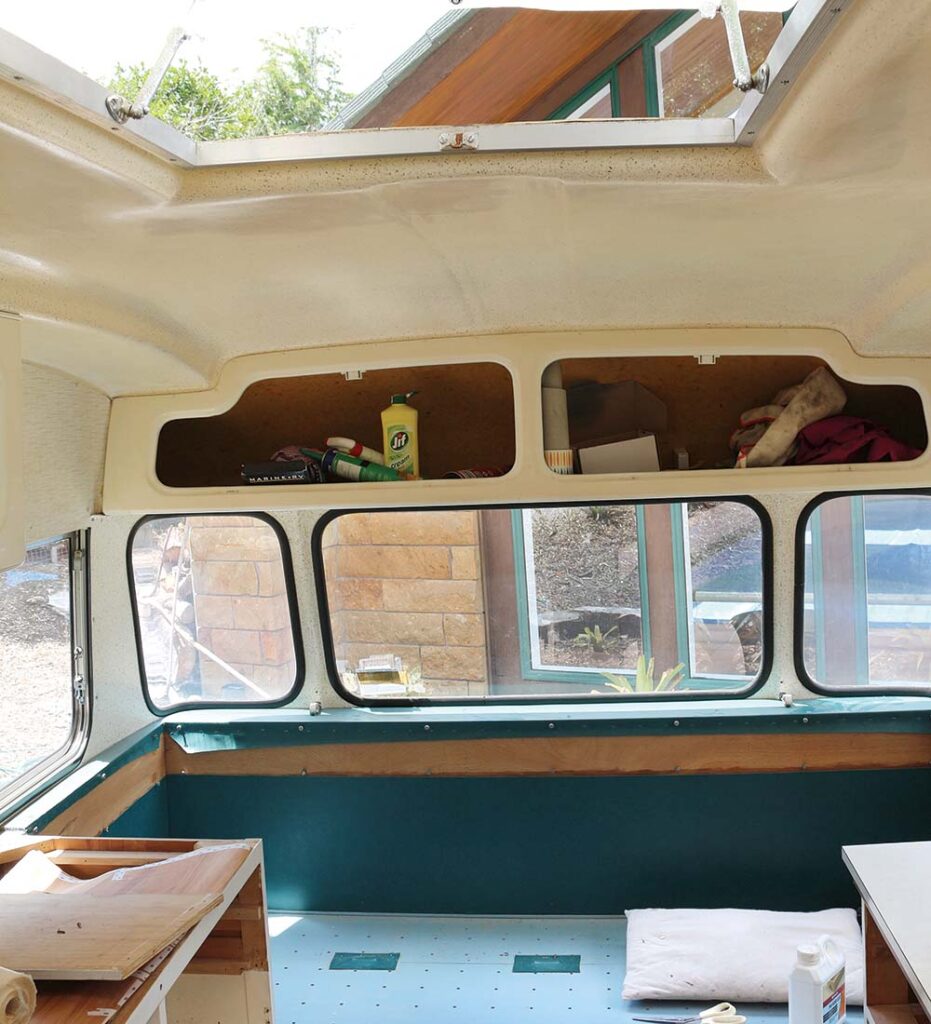
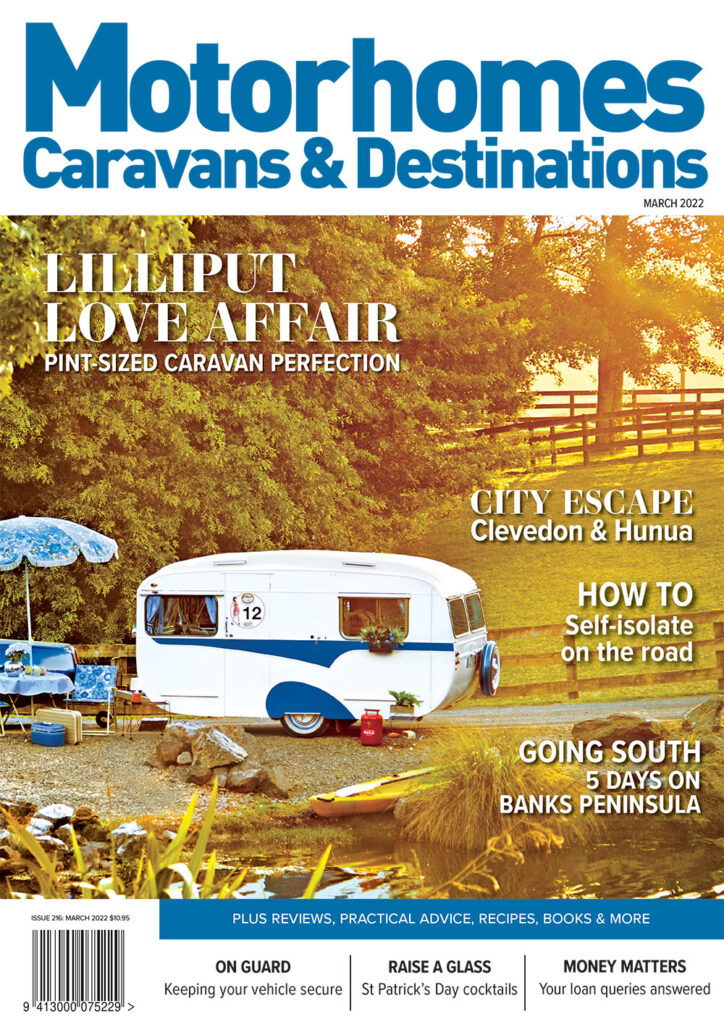
Looking for motorhomes or caravans for sale in NZ? Browse our latest listings here.







